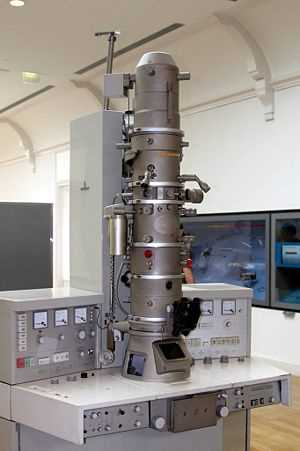The Electron Microscope was invented by “Ernst August Friedrich Ruska” under the doctoral guidance of ‘Max Knoll’.

Ernst Ruska was a German Physicist who invented the Electron Microscope in 1933. He also got the Nobel Prize in the year 1986, for his work in ‘Electron Optics’ and inventing the Electron Microscope. In 1931, he demonstrated his study that a magnetic coil could act as an electron lens. Further, working over the study he invented an Electron Microscope. The initial microscope was only capable of magnifying the objects only by 400 times. While, 2 years later, he constructed the microscope which exceeded the resolution using an Optical Microscope. He also participated in developing the first commercially produced electron microscope in 1939.

Electron Microscope is a Microscope which uses a beam of electrons as a source of illumination. Electron Microscope allows getting a high-resolution image of biological and non-biological specimens. It is very helpful in the biomedical field, research field to investigate the detailed structure of tissues, cells, and macromolecular complexes. Electron Microscope images provide precise and in-depth information on the structural basis of cell function and disease. The electron microscope uses electrostatic and electromagnetic lenses in producing the image while controlling the beam of an electron to focus it on the specific plane.
The Modern Electron Microscope is capable of magnifying the objects up to 2 Million times, but following the same prototype of Ernst Ruska. The Electron Microscope are quite expensive to build and maintain.
Ernst Ruska won ‘Lasker Award’ in 1960. He was awarded half of the Nobel Prize in Physics for his achievement in Electron Optics in 1986 and he shared his another half of Nobel Prize with Gerd Binnig and Heinrich Rohrer for their design of the scanning tunneling microscope, while they both shared the quarter of Nobel Prize.